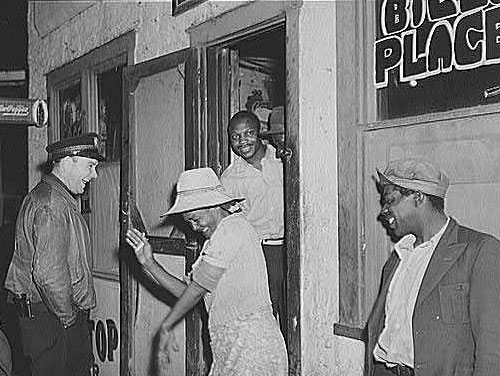 |
Guides to Online
Primary Sources:
Colonial America and Early Republic
Locating and Evaluating Online Resources
Advertising
Film
Letters
and Diaries
Maps
Music
Oral History
Photography
Quantitative
History
Civil War and Reconstruction
Inter-war Years
Civil Rights
Cold War America
American
Culture
Civil
Rights
Foreign
Policy and Relations
Legal History
Politics
and Presidents
Social
Reform
National Archives and Records Administration
(NARA)
Colonial America and Early Republic
Gilder Lehrman Institute of American History, Gilder
Lehrman Institute
http://www.gliah.uh.edu/index.cfm
This site provides multimedia resources and links for teaching American
history, focusing on slavery, ethnic history, private life, technology,
and film. The site offers a full U.S. history textbook and more than 1,500
searchable and briefly annotated links to American history-related sites,
including 150 links to Supreme Court decisions and 330 links to historic
speeches.
 Afro-Louisiana
History and Genealogy, 1718-1820, UNC, Chapel Hill Afro-Louisiana
History and Genealogy, 1718-1820, UNC, Chapel Hill
http://www.ibiblio.org/laslave/
This site provides detailed data on more than 100,000 slaves and free
blacks in Louisiana from 1718 to 1820. Users can search by name of slave,
master’s name, gender, epoch, racial designation, plantation location,
and place of origin. Information was compiled from documents created when
slaves arrived by ship, were bought and sold, reported as runaways, testified
in court cases, manumitted, and at the death of masters.
Hypertext on American History, University Groningen
(Netherlands)
http://odur.let.rug.nl/~usa/usa.htm
This site provides more than 3,000 documents pertaining to United States
history, primarily from the colonial period to the end of the 19th century.
Though this site provides no contextualization, it is very useful for
locating important documents.
Congressional Documents and Debates, 1774-1873, American
Memory, Library of Congress
http://memory.loc.gov/ammem/amlaw/lawhome.html
This site offers records and acts of Congress from the Journals of
the Continental Congress through The Congressional Globe, which
ceased publication with the 42nd Congress in 1873. An excellent resource
for antebellum and reconstruction politics.
Do History—Martha Ballard’s Diary Online,
Film Study Center, Harvard University
http://dohistory.org/
This experimental, interactive case study explores the remarkable 18th-century
diary of midwife Martha Ballard, including two versions of the 1400-page
diary, facsimile and transcribed full-text; more than 300 documents, interactive
exercises, and teaching resources.
Drafting the Documents of Independence, Library of Congress
http://lcweb.loc.gov/exhibits/declara/declara1.html
Eight documents and prints relating to the Declaration of Independence
are presented on this site, including a fragment of the earliest known
draft and Thomas Jefferson’s “original rough draught” with
changes by John Adams, Benjamin Franklin, and others. This site is well-organized
and successfully tracks the Declaration’s development and effect.
The Hartford Black History Project, Hartford Black History
Project
http://www.hartford-hwp.com/HBHP/index.html
Two exhibits on black history in Hartford, Connecticut. “A Struggle
from the Start” charts stages in the life of the Hartford African-American
community from 1638 to 1920, including slavery, black codes, free blacks,
black governors, and black community institutions. A second exhibit presents
approximately eighty photographs from Hartford’s African-American
community covering the years 1870 to the 1970s.
Campaign Atlases, United States Military Academy
http://www.dean.usma.edu/history/dhistorymaps/MapsHome.htm
Visitors will find more than 400 color maps of military campaigns from
American colonial wars to U.S. involvement in Somalia in 1992-1993. Most
maps are of conflicts in which the U.S. played a role. Maps are indexed
by war and may be enlarged. The site is easy to navigate although maps
are large and can be slow to download.
United States Historical Census Data Browser, University
of Virginia Library
http://fisher.lib.virginia.edu/census/
This site provides data gathered from census records and other government
sources for a study entitled “Historical Demographic, Economic, and
Social Data: The United States, 1790-1970.” For each decade, users
can browse extensive population- and economic-oriented statistical information
at state and county levels, arranged according to a variety of categories,
including place of birth, age, gender, marital status, race, ethnicity
and education.
A Brush With History: Paintings from the National Portrait
Gallery, Smithsonian
http://www.npg.si.edu/exh/brush/index1.htm
The National Portrait Gallery is closed
for renovation, but visitors to this site can view seventy-six portraits
of prominent Americans drawn from the Gallery’s collections.
Paintings are arranged in chronological order, from the 1720s to
the 1990s. Featured artists include famous 18th and 19th century
portraitists Gilbert Stuart and John Singer Sargent, as well as
more abstract 20th century artists like Marguerite Zorath. A brief
biography accompanies each portrait, along with the artist’s
name (if known), the year painted, the medium, and acquisition information. |
|
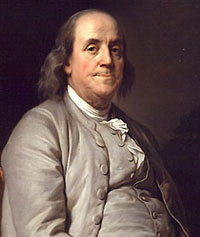 |
Thomas Jefferson Digital Archive, University of Virginia
http://etext.lib.virginia.edu/jefferson/
Provides more than 1,700 texts—correspondence, books, addresses,
and a variety of public papers—written by or to Thomas Jefferson.
The site also includes a biography of Jefferson written in 1834, eight
years after his death. The Jeffersonian Cyclopedia, published in 1900,
organizes more than 9,000 quotes according to theme and other categories.
A collection of 2,700 excerpts from Jefferson’s writings present
his political philosophy.
Virginia Runaways Project, University of Virginia
http://www.wise.virginia.edu/history/runaways/
Provides full transcriptions and images of more than 2,200 newspaper advertisements
regarding runaway slaves, mostly from the Williamsburg Virginia Gazette,
between 1736 and 1776. Includes ads placed by owners and overseers for
runaways as well as ads for captured runaway or suspected runaway slaves
placed by sheriffs and other governmental officials. In addition, the
site’s creators have included ads for runaway servants and sailors
as well as military deserters. Searchable by any words appearing in ads.
Additional material includes three K-12 teaching guides using the ads.

Locating and Evaluating Online Resources
Advertising
The Living Room Candidate: A History of Presidential Campaign
Commercials, 1952-2000, American Museum of the Moving Image.
http://www.ammi.org/livingroomcandidate/
This site offers 183 television commercials used since 1952 to sell presidential
candidates to the American public and an annotated guide to twenty-one
websites created for the 1996 and 2000 elections. Ads from each election
are accessible by year as well as by common themes and strategies used
over the years, such as ‘Looking Presidential,’ ‘Attack
Ads,’ ‘Family Man,’ and ‘Real People.’ Essays
(200-400 words) analyze ad strategies of the major party candidates for
each election; and a program guide (1,000-words)for high school students
presents a history of the usage of TV commercials in campaigns. Valuable
for students of American political history, consumer culture, and advertising
history.
Ad*Access, Duke University Digital Scriptorium
http://scriptorium.lib.duke.edu/adaccess/
This easily navigated site presents images
and database information for more than 7,000 advertisements printed
primarily in the United States from 1911 to 1955. It is an excellent
archive of primary documents for students of consumer and popular
culture. |
|
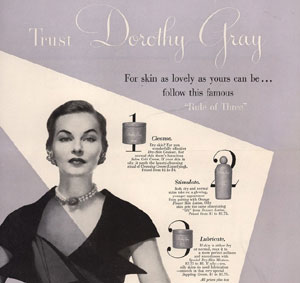 |
Film
Theodore Roosevelt: His Life and Times on Film, American
Memory, Library of Congress
http://memory.loc.gov/ammem/trfhtml/trfhome.html
Theodore Roosevelt was the first president to have his life chronicled
through extensive use of film. This site offers 104 films depicting events
in Roosevelt’s life, from the Spanish-American War in 1898 to his
death in 1919. This site is a good resource for learning about Theodore
Roosevelt and early film.
The American Variety Stage, 1870-1920, American Memory,
Library of Congress
http://memory.loc.gov/ammem/vshtml/vshome.html
This collection documents the development of vaudeville and other popular
entertainment from the 1870s to the 1920s. It includes 334 English- and
Yiddish-language play scripts, 146 theater programs and playbills, sixty-one
motion pictures, and ten sound recordings. This site also features 143
photos and twenty-nine memorabilia items documenting the life of Harry
Houdini.
Letters and Diaries
George Washington Papers, 1741-1799, American Memory,
Library of Congress
http://memory.loc.gov/ammem/gwhtml/
This collection of approximately 65,000 documents written by or to George
Washington includes correspondence, letterbooks, diaries, journals, account
books, military records, reports, and notes written from 1741 through
1799. Because of the wide range of Washington’s interests and correspondents,
including ordinary citizens, his papers are a rich source for studying
almost every aspect of colonial and early American history.
African-American Women, The Digital Scriptorium, Duke
University
http://scriptorium.lib.duke.edu/collections/african-american-women.html
Writings of three African-American women of the 19th century are offered
in this site. It features scanned images and transcriptions of an eighty-five-page
memoir by Elizabeth Johnson Harris (1867-1923), a Georgia women whose
parents had been slaves; a 565-word letter written in 1857 by a North
Carolinian slave named Vilet Lester; and four letters written between
1837 and 1838 by Hannah Valentine and Lethe Jackson, slaves on a Virginia
plantation. The documents are accompanied by three background essays,
six photographs, a bibliography of seven titles on American slave women,
and eight links to additional resources. Documents offer insight into
the lives of women living under slavery and during its aftermath in the
South.
Maps
Panoramic Maps, 1847-1929, American Memory, Library
of Congress
http://memory.loc.gov/ammem/pmhtml/panhome.html
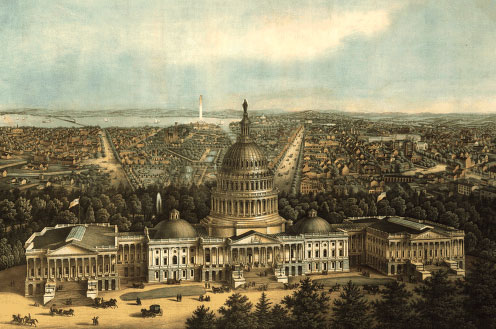
This site presents more than 1,000 original panoramic maps,
a popular cartographic form during the late 19th and early 20th centuries.
The maps cover the contiguous forty-eight states and four Canadian provinces
of British Columbia, Nova Scotia, Ontario, and Quebec from 1847 to 1929.
Viewers can zoom in to find artists’ renderings of individual streets,
buildings, and landscapes. An excellent resource for studying urbanization,
cities, growth, and mapmaking.
David Rumsey Historical Map Collection, Cartography
Associates
http://www.davidrumsey.com/
This site consists of more than 4,400 historical maps of North and South
America. Most of the maps were made in the 18th and 19th centuries; many
are notable for their craftsmanship. Searchable by country, state, publication
author, keyword, date, title, event, subject, and name of engraver or
printer. This site vividly conveys how certain locations have changed
over time.
Music
Blues, Gospel, and the Fort Valley Music Festivals, 1938-1943,
American Memory, Library of Congress
http://memory.loc.gov/ammem/ftvhtml/ftvhome.html
This site is a collection of 104 sound recordings from annual folk festivals
held at Fort Valley State College, an African-American teaching college
in central Georgia. It also provides sixty-three items of written documentation
about the festival and the recording project. The collection is an extraordinary
record of non-commercial American music and musical styles.
Max Hunter Folk Song Collection, Southwest Missouri
State University
http://www.smsu.edu/folksong/maxhunter/
This site is a collection of audio files and song transcriptions of more
than 1,000 songs recorded in the Ozark Mountains of Missouri and Arkansas
between 1956 and 1976. Lyrics for all songs are included; some also have
musical notations, names of singers, and location and date of the recording.
No information is offered for composer or lyricist. Users may browse singers
and song titles or search titles using keywords.
Oral History
Studs Terkel: Conversations With America, Chicago Historical
Society
http://www.studsterkel.org/index.html
This site was created in honor of Studs Terkel, noted oral historian,
radio host, and Pulitzer Prize-winning author. An educational section
helps students and teachers use oral history in the classroom. This site
offers a rich history of many influential, as well as lesser-known, personalities
living in the second half of the 20th century, and is beneficial to anyone
interested in the Great Depression, World War II, race relations, and
labor issues.
Oral History Online! Bancroft Library, University of California,
Berkeley
http://bancroft.berkeley.edu/ROHO/collections/ohonline.html
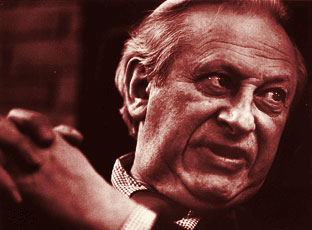 Oral History Online has full-text transcripts of more than fifty-five
searchable interviews. Current offerings include “The University
History Series” focusing on the Free Speech Movement, “The Suffragists
Oral History Project,” and interviews regarding the medical response
to the AIDS epidemic in San Francisco, 1981-1984. The site also contains
“Oral History Tips” and guides to “Conducting an Oral History”
and “Oral History Interviewing.”
Oral History Online has full-text transcripts of more than fifty-five
searchable interviews. Current offerings include “The University
History Series” focusing on the Free Speech Movement, “The Suffragists
Oral History Project,” and interviews regarding the medical response
to the AIDS epidemic in San Francisco, 1981-1984. The site also contains
“Oral History Tips” and guides to “Conducting an Oral History”
and “Oral History Interviewing.”
Photography
Touring Turn-of-the-Century America: Photographs from
the Detroit Publishing Company, 1880-1920, American Memory, Library
of Congress
http://memory.loc.gov/ammem/detroit/dethome.html
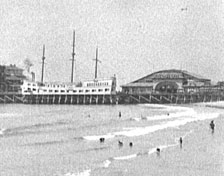 The Detroit Publishing Company mass produced photographic images--especially
color postcards, prints, and albums--for the American market from the
late 1890s to 1924. This collection of more than 25,000 glass negatives
and transparencies and about 300 color photolithographs also includes
images taken prior to the company’s formation by landscape photographer
William Henry Jackson, who became the company’s president in 1898.
Although many images were taken in eastern locations, other areas of the
U.S., the Americas, and Europe are represented. The collection specializes
in views of buildings, streets, colleges, universities, natural landmarks,
resorts, and copies of paintings. More than 300 photographs were taken
in Cuba during the Spanish-American War. About 900 Mammoth Plate Photographs
include views of Hopi peoples and their crafts and landscapes along several
railroad lines in the 1880s and 1890s.
The Detroit Publishing Company mass produced photographic images--especially
color postcards, prints, and albums--for the American market from the
late 1890s to 1924. This collection of more than 25,000 glass negatives
and transparencies and about 300 color photolithographs also includes
images taken prior to the company’s formation by landscape photographer
William Henry Jackson, who became the company’s president in 1898.
Although many images were taken in eastern locations, other areas of the
U.S., the Americas, and Europe are represented. The collection specializes
in views of buildings, streets, colleges, universities, natural landmarks,
resorts, and copies of paintings. More than 300 photographs were taken
in Cuba during the Spanish-American War. About 900 Mammoth Plate Photographs
include views of Hopi peoples and their crafts and landscapes along several
railroad lines in the 1880s and 1890s.
Florida State Archives Photographic Collection,
Joan Morris, Florida State Archive
http://www.floridamemory.com/PhotographicCollection/
More than 100,000 photographs, many focusing on specific localities from
the mid-nineteenth century to the present, are available on this website.
Materials include collections on agriculture, the Seminole Indians, state
political leaders, Jewish life, family life, postcards, and tourism.
Quantitative History
Centennial Celebration, Bureau of the Census
http://www.census.gov/mso/www/centennial/index.html
This site provides a wealth of statistical information on the U.S. population.
While most materials offer recent data, more than thirty comprehensive
reports and tables track decade-by-decade demographic shifts, including
urban and rural population change, population of the largest one hundred
cities, population density, and homeownership rates.
Dynamics of Idealism: Volunteers for Civil Rights, 1965-1982,
Univ. of Wisconsin-Madison
http://dpls.dacc.wisc.edu/Idealism/index.html
Provides documentation collected for a study of the attitudes, backgrounds,
goals, and experiences of volunteers participating in a 1965 Southern
Christian Leadership Conference voter registration effort. Includes questionnaires
submitted prior to and following the project, as well as a follow-up survey
conducted in 1982. Participants were queried as to reasons they volunteered,
what they expected, their attitudes regarding race and politics, and subsequent
attitudes regarding civil rights, violence, and social change. This information
is valuable for those studying the civil rights movement and sociological
aspects of American reformers.
Civil War and Reconstruction
The African American Odyssey, American Memory, Library
of Congress
More than 240 items dealing with African-American history, including books,
government documents, manuscripts, maps, musical scores, plays, films,
and recordings. The site is organized into nine chronological periods,
including slavery, the Civil War and Reconstruction; the black exodus,
the “Booker T. Washington era” of progress, World War I, the
Depression and World War II; and Civil Rights. It is a well-written guide
for exploring African-American history.
Slaves and the Courts, 1740-1860, American Memory, Library
of Congress
http://memory.loc.gov/ammem/sthtml/sthome.html
Provides published materials on legal aspects of slavery. Most of the
pamphlets and books pertain to American cases in the 19th century. Includes
documents on the slave trade, slave codes, the Fugitive Slave Law, and
slave insurrections, and courtroom proceedings from famous trials such
as the Amistad case, the Denmark Vesey conspiracy trial, and trials of
noted abolitionists John Brown and William Lloyd Garrison.
Images of African Americans from the 19th Century, New
York Public Library
http://digital.nypl.org/schomburg/images_aa19/
This site contains roughly 500 images depicting the social, political,
and cultural worlds of African Americans. The site can be searched through
17 subject categories, such as family, labor, Civil War, slavery, social
life and customs, and portraits. This site offers a keyword search and
is ideal for researching African American and 19th century history.
Born in Slavery: Slave Narratives from the Federal Writers
Project, 1936-1938, American Memory, Library of Congress
http://lcweb2.loc.gov/ammem/snhtml/snhome.html
A gold mine of information on the history of slavery from those who lived
as slaves. This site has more than 2,300 first person accounts of slavery
and 500 black and white photographs of former slaves. These narratives
and photographs were collected as part of the 1930s Federal Writers Project
of the Works Project Administration, and they were assembled and microfilmed
in 1941 as the seventeen-volume Slave Narratives: A Folk History of
Slavery in the United States from Interviews with Former Slaves.
The Time of the Lincolns, PBS Online, WGBH, American
Experience
http://www.pbs.org/wgbh/amex/lincolns/
This companion site to the six-hour documentary,
Abraham and Mary Lincoln: A House Divided includes essays
and videos addressing the antislavery movement, the Underground
Railroad, defenses for slavery, “wage slavery” in the
North, African-Americans in the North, developments in technology,
women’s rights, and literary women. This site is comprehensive
and exceptionally well-designed. A teacher’s guide is included.
|
|
 |
The Lester S. Levy Collection of Sheet Music, Johns
Hopkins University
http://levysheetmusic.mse.jhu.edu/index.html
 Provides scanned images of more than 18,000 pieces of sheet music, especially
19th-century popular music, including songs related to military conflicts,
presidents, romance, transportation, and the minstrel stage. Users may
search for songs on hundreds of topics such as drinking, smoking, the
circus, and death, or look for composers, song titles, or other catalog
record data.
Provides scanned images of more than 18,000 pieces of sheet music, especially
19th-century popular music, including songs related to military conflicts,
presidents, romance, transportation, and the minstrel stage. Users may
search for songs on hundreds of topics such as drinking, smoking, the
circus, and death, or look for composers, song titles, or other catalog
record data.
Making of America, University of Michigan
http://moa.umdl.umich.edu/
This site is a “digital library” of thousands of primary documents
in American social history from the Antebellum period through Reconstruction.
It offers more than three million pages of text from 10,000 volumes and
50,000 journal articles.
Valley of the Shadow: Two Communities in the American Civil
War, University of Virginia
http://jefferson.village.virginia.edu/vshadow/
A massive, searchable archive of thousands of pages of maps, images, letters,
diaries, newspapers, and church, agricultural, military, and public records—all
relating to two communities, Staunton, Virginia, and Chambersburg, Pennsylvania,
before, during, and after the Civil War.
Selected Civil War Photographs, Library of Congress,
American Memory
http://memory.loc.gov/ammem/cwphtml/cwphome.html
 This collection offers 1,118 photographs depicting Civil War military
personnel, preparations for battle, and the aftermath of battles in the
main eastern theater and in the west, in addition to Federal Navy and
Atlantic seaborne expeditions against the Confederacy. The presentation
“Does the Camera Ever Lie” demonstrates the constructed nature
of images.
This collection offers 1,118 photographs depicting Civil War military
personnel, preparations for battle, and the aftermath of battles in the
main eastern theater and in the west, in addition to Federal Navy and
Atlantic seaborne expeditions against the Confederacy. The presentation
“Does the Camera Ever Lie” demonstrates the constructed nature
of images.
HarpWeek: Explore History, John Adler
http://www.harpweek.com/
This collection of exhibits presents free access to a wealth of texts
and images taken from Harper’s on a variety of subjects dealing with
19th-century American political and social history. “Presidential
Elections” offers 320 annotated political cartoons. “Toward
Racial Equality” presents approximately seventy cartoons, illustrations,
and advertisements dealing with slavery, the Civil War, Reconstruction,
and African-American culture and society.
Civil War Women, Digital Scriptorium, Duke University
http://scriptorium.lib.duke.edu/collections/civil-war-women.html
These Civil War-era documents relate to three American women of diverse
backgrounds and political persuasions. These women are Rose OÍNeal Greenhow,
a Confederate spy and Washington socialite; Sarah E. Thompson, who organized
Union sympathizers near her home in Greenville, Tennessee; and sixteen-year-old
Alice Williamson, a Gallatin, Tennessee, schoolgirl who kept a diary about
the Union occupation of her town.
Eye of the Storm, Michael Johnson, Adam Stoltman, and
Alan Dorow, Journal E
http://www.musarium.com/eyeofthestorm/index.html
Presents more than 500 watercolor drawings and maps by Union Army Private
Knox Sneden, depicting battle scenes, camp life, and maps. Four presentations
depict particular incidents Sneden witnessed.
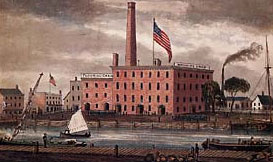
A Civil War Soldier in the Wild Cat Regiment: Selections
From the Tilton C. Reynolds Papers,
American Memory, Library of Congress
http://lcweb2.loc.gov/ammem/tcrhtml/
This collection offers a unique perspective on the lives of a Union soldier
and his family. The selected letters lend insight into the wartime dynamics
of the Reynolds family, and their words reveal how family members in Reynolds’
regiment looked after him, announced his capture, and gave advice. The
letters also describe the daily life of a Union soldier, touching on such
topics as food, clothing, shelter, health, and punishment. Soldiers’
feelings, views on slavery and the election of 1864, as well as Reynolds’
account of seeing President and Mrs. Lincoln can all be found in this
collection. The site also features two Special Presentations: “Timeline:
History of the 105th Regiment of Pennsylvania Volunteers, 1861-1865”
and one on the Reynolds family.
Inter-war Years
Dr. Seuss Went to War: A Catalog of Political Cartoons,
UC San Diego
http://orpheus.ucsd.edu/speccoll/dspolitic/
From 1941 to 1943, Dr. Seuss (Theodor Seuss Geisel) drew more than 400
editorial cartoons as the chief editorial cartoonist for the New York
newspaper PM. The cartoons are primarily related to issues surrounding
World War II, and include caricature images of political figures like
Adolph Hitler, Benito Mussolini, and Franklin D. Roosevelt.
The Emma Goldman Papers, Berkeley Digital Library
http://sunsite.berkeley.edu/Goldman/
This site provides primary resources on Emma Goldman (1869-1940), a major
figure in the history of radicalism and feminism in the United States
prior to her deportation in 1919. Includes writings, speeches, newspaper
accounts, and photographs, as well as a 1934 Hearst Metrotone Newsreel
entitled Famous Anarchist Back from Exile.
The New Deal Network, Teachers College, Columbia University
http://newdeal.feri.org/
A database of more than 20,000 items relating to the New Deal, including
newspaper and journal articles, speeches, letters, reports, advertisements,
and other textual materials, more than 4,000 images, and featured exhibits,
many with lesson plan suggestions.
American Radicalism Collection, Michigan State University
Libraries
http://www.lib.msu.edu/coll/main/spec_col/radicalism/index.htm
This site contains 129 images of pamphlets and newsletters produced by
radical movements. Groups and issues represented by one to 30 digital
images are: Birth Control; the Black Panthers; the Hollywood Ten; the
IWW; the Ku Klux Klan; the Rosenbergs; Sacco and Vanzetti; the Scottsboro
Boys; Students for a Democratic Society; and Wounded Knee.
Photographs from the FSA-OWI, 1935-1945, American Memory,
Library of Congress
http://memory.loc.gov/ammem/fsowhome.html
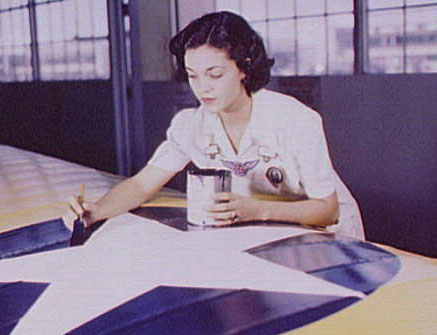 This site features more than 100,000 images taken by government photographers
with the Farm Security Administration (FSA) and the Office of War Information
(OWI) during the New Deal and World War II eras. These images document
the ravages of the Great Depression on farmers, scenes of everyday life
in small towns and cities, and mobilization campaigns for World War II.
This site features more than 100,000 images taken by government photographers
with the Farm Security Administration (FSA) and the Office of War Information
(OWI) during the New Deal and World War II eras. These images document
the ravages of the Great Depression on farmers, scenes of everyday life
in small towns and cities, and mobilization campaigns for World War II.
Internet Moving Images Archive, Prelinger Archives and
Internet Archive
http://webdev.archive.org/movies/prelinger.php
This site offers films selected from the Prelinger Archives, a privately
held collection of 20th-century American ephemeral films (films produced
for specific purposes at specific times, not intended for long-term preservation).
The site includes films produced between 1927 and 1987 by and for U.S.
corporations, nonprofit organizations, trade associations, community and
interest groups, and educational institutions. Note that viewing these
movies requires a DSL or faster connection and movies take several minutes
to load.
By the People, For the People: Posters from the WPA, 1936-1943,
NARA
http://memory.loc.gov/ammem/wpaposters/wpahome.html
This colorful exhibit showcases more than
900 original Works Project Administration posters produced from
1936 to 1943 as part of Franklin D. Roosevelt’s New Deal program
to support the arts. The silkscreen, lithograph, and woodcut posters
were designed to publicize health and safety programs, art exhibits,
theatrical and musical performances, travel and tourism, educational
programs, and community activities in seventeen states and the District
of Columbia. |
|
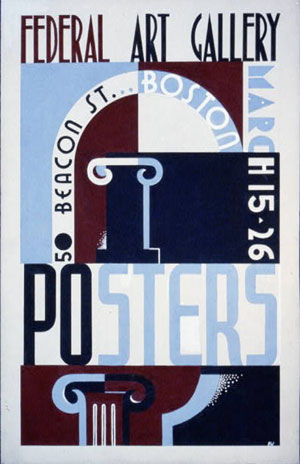 |
Anti-Saloon League, 1893-1933, Ohio Public Library
http://memory.loc.gov/ammem/wpaposters/wpahome.html
This selection of printed material is representative of the public campaigns
of the Anti-Saloon League from 1893 to 1933. Highlights include fourteen
wet and dry maps of the U.S., three temperance anthems, transcriptions
of nine anti-alcohol stories, and twelve pro-temperance cartoons. In addition,
six entries from the Standard Encyclopedia of the Alcohol Problem
offer the Temperance perspective on communion wine, whiskey production,
and alcohol use in China. Teachers will find eleven classroom activities
relating to social reform.
Famous Trials, Douglas Linder, University of Missouri,
Kansas City
http://www.law.umkc.edu/faculty/projects/ftrials/ftrials.htm
This exceptional legal history site includes fascinating treatments of
twenty of the most prominent court trials in American history, including:
the Scopes “Monkey” Trial (1925); Scottsboro Trials (1931-1937);
Nuremburg Trials (1945-49);the Hauptmann (Lindbergh) Trial (1935); and
the Sweet Trials (1925-1926). There are also links to biographies of five
“trial heroes,” including famous trial lawyer Clarence Darrow,
and a “Constitutional Conflicts” site that offers twenty-nine
important constitutional topics for class discussion.
California Gold: Northern California Folk Music from the
Thirties, American Memory, Library of Congress
http://memory.loc.gov/ammem/afccchtml/cowhome.html
This site features thirty-five hours of folk and popular music sound recordings
from several European, Slavic, Middle Eastern, and English- and Spanish-speaking
communities. The Work Projects Administration California Folk Music Project
collected these 817 songs, in twelve languages and representing 185 musicians,
in Northern California between 1938 and 1940. The collection also includes
168 photographs of musicians, forty-five scale drawings and sketches of
instruments, and numerous written documents.
Anti-Imperialism in the United States, 1898-1935, Jim
Zwick, American Studies Scholar
http://memory.loc.gov/ammem/afccchtml/cowhome.html
This innovative site of important texts on American imperialism and its
opponents presents approximately 800 essays, speeches, pamphlets, political
platforms, editorial cartoons, petitions, and pieces of literature, such
as Mark Twain’s anti-imperialist writings and the text of Rudyard
Kipling’s The White Man’s Burden accompanied by fifty contemporary
reactions. Arranged by document type and searchable by keyword, the materials
also include information concerning bulletin boards and electronic discussion
networks.
FDR Cartoons, Niskayuna High School, New York
http://www.nisk.k12.ny.us/fdr/FDRcartoons.html
A continuing project of high school history and science classes, this
site presents thousands of political cartoons concerning the presidency
of Franklin D. Roosevelt. Of particular interest is the “Cartoons”
link, which leads to a comprehensive database showing depictions of FDR’s
Presidency in the popular medium. Periods currently emphasized include,
“1932, The Road to Pennsylvania Avenue,” “1937, The Supreme
Court,” and “1943, The War Years.” Well-conceived and executed,
the site also gives the texts of Roosevelt’s inaugural addresses
and a page of teacher resources and suggested projects.
Jukin’ it Out: Contested Visions of Florida in New
Deal Narratives, Oberlin College
http://www.oberlin.edu/library/papers/honorshistory/2001-Gorman/default.html
Created as a senior honors project at Oberlin College, this conceptually
sophisticated site explores issues of narrative and representation in
two New Deal cultural projects. The site uses the 1939 WPA guide to Florida
and FSA-sponsored documentary photography from the period, in particular
photographs of “jook joints” to investigate such themes as local
color writing, documentary photography, and tour guides as modes of communication,
all within the context of key intellectual and cultural concepts that
marked the 1930s. The site includes a thoughtful analysis of why and how
to write history in hypertext.
Civil Rights
The African American Odyssey, American Memory,
Library of Congress
http://memory.loc.gov/ammem/aaohtml/exhibit/aointro.html
More than 240 items dealing with African American history from collections
of the Library of Congress, including books, government documents, manuscripts,
maps, musical scores, plays, films, and recordings. The exhibition explores
black America’s quest for political, social, and economic equality
from slavery through the mid-20th century. Organized into nine chronological
periods, including slavery; the Civil War and Reconstruction; World War
I and the postwar period; the Depression, New Deal, and World War II;
and the Civil Rights era. Each section includes a 500-word overview and
annotations of 100 words in length for each object displayed. In addition
to documenting the struggle for freedom and civil rights, the exhibit
includes celebratory material on contributions of artists, writers, performers,
and sports figures. Valuable for students and teachers looking for a well-written
guide for exploring African American history.
Ansel Adams’s Photographs of Japanese-American
Internment at Manzanar, American Memory, Library of Congress
http://memory.loc.gov/ammem/aamhtml/aamhome.html
 Photographer
Ansel Adams documented the lives of Japanese Americans at the Manzanar
War Relocation Center in California with portraits of daily life, including
agriculture and leisure. This site presents 242 original negatives and
209 photographic prints. These are often presented together to show Adams’s
developing and cropping techniques. This website also offers a digital
version of Adams’s 112-page book on Manzanar, published in 1944,
Born Free and Equal. Valuable for studying the World War II homefront,
discrimination, Asian Americans, and photography. Photographer
Ansel Adams documented the lives of Japanese Americans at the Manzanar
War Relocation Center in California with portraits of daily life, including
agriculture and leisure. This site presents 242 original negatives and
209 photographic prints. These are often presented together to show Adams’s
developing and cropping techniques. This website also offers a digital
version of Adams’s 112-page book on Manzanar, published in 1944,
Born Free and Equal. Valuable for studying the World War II homefront,
discrimination, Asian Americans, and photography.
By Popular Demand: Jackie Robinson and Other Baseball
Highlights, 1860s-1960s, American Memory, Library of Congress
http://memory.loc.gov/ammem/jrhtml/jrhome.html
This site presents hundreds of primary materials relating to baseball
in America, including letters, manuscripts, trading cards, lobby cards,
newspaper images, photographs, advertisements, sheet music, and transcripts
of interviews, speeches, and television broadcasts. There are two presentations
of material from the collection divided into five sections, “Baseball,
the Color Line, and Jackie Robinson, 1860s-1960s” and “Early
Baseball Pictures.” The site also includes an annotated bibliography
comprised of 82 titles and a list of six links to related resources. These
materials provide an introductory look at Jackie Robinson’s life
and the topic of race in American sports history.
Central High Crisis: Little Rock, 1957, Little
Rock Newspapers, Inc.
http://www.ardemgaz.com/prev/central/
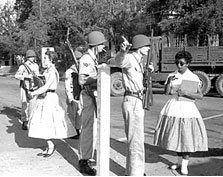 The
site includes multiple news articles and editorials from each day of the
month-long crisis and 16 photographs. Historical memory is addressed by
the inclusion of material on the 40th anniversary of the crisis in 1997,
including: 13 op-ed pieces, speeches by Arkansas Governor Mike Huckabee
and President Bill Clinton, an interview with President Clinton, and a
1991 defense by Governor Faubus of his actions. The site also provides
19 related newspaper articles written since 1997, timelines of events
leading up to the confrontation and after, and a “Who’s Who”
of participants. This site will be valuable to students and teachers of
the history of the civil rights movement, the South, mid-20th century
politics, and the workings of historical memory. The
site includes multiple news articles and editorials from each day of the
month-long crisis and 16 photographs. Historical memory is addressed by
the inclusion of material on the 40th anniversary of the crisis in 1997,
including: 13 op-ed pieces, speeches by Arkansas Governor Mike Huckabee
and President Bill Clinton, an interview with President Clinton, and a
1991 defense by Governor Faubus of his actions. The site also provides
19 related newspaper articles written since 1997, timelines of events
leading up to the confrontation and after, and a “Who’s Who”
of participants. This site will be valuable to students and teachers of
the history of the civil rights movement, the South, mid-20th century
politics, and the workings of historical memory.
Civil Rights in Mississippi Digital Archive,
University of Southern Mississippi Libraries and Center for Oral History
http://www.lib.usm.edu/~spcol/crda/oh/index.html
This website currently offers 150 oral histories relating to the civil
rights movement. The site features interviews with civil rights leaders,
such as Charles Cobb, Charles Evers, and Aaron Henry. It also offers oral
history information about prominent figures on both sides of the civil
rights movement. The alphabetical interview index offers a 50–100
word biography of each subject, as well as information on the date and
place of the interview. Each interview file includes a longer (250–300
word) biography, a list of topics discussed, a transcript of the interview,
and descriptive information about the interview, the interviewer, interviewee,
and topics, time period, and regions covered. The site also offers 16
collections of documents that include hundreds of pages of letters, journals,
photographs, pamphlets, newsletters, FBI documents, and arrest records.
Six collections pertain to Freedom Summer, the 1964 volunteer initiative
in Mississippi to establish schools, register voters, and organize a bi-racial
Democratic party. One collection is devoted to the freedom riders who
challenged segregation in 1961. Short biographies are furnished on each
interviewee, in addition to a list of topics addressed. This is a good
site for studying the personalities behind the civil rights movement in
southern Mississippi.
Conscience and the Constitution, Frank Abe,
Public Broadcasting System
http://www.pbs.org/itvs/conscience/index.html
A companion to the PBS broadcast of the same name, this site examines
the refusal of a handful of young Japanese American men to be drafted
until the American government restored their rights of citizenship and
released their families from “relocation” camps. The site
gives brief (350-word) biographies of the 16 main characters; a timeline;
a 750-word history of the compliant Japanese American Citizens League;
the aftermath of the resistance; the conflicting opinions among Japanese
Americans; an 18-work bibliography of poetry, novels, and scholarly works;
and 2 lesson plans. There are 15 video and three audio clips, more than
20 photographs, and more than 60 documents, including letters, court testimony,
and government reports. This rich site is ideal for those interested in
the history of race and the history of civil disobedience in the United
States.
Dynamics of Idealism: Volunteers for Civil Rights,
1965–1982, University of Wisconsin-Madison
http://dpls.dacc.wisc.edu/Idealism/index.html
Provides documentation collected for a study of the attitudes, backgrounds,
goals, and experiences of volunteers participating in a 1965 Southern
Christian Leadership Conference voter registration effort. Includes questionnaires
submitted prior to and following the project, as well as a follow-up survey
conducted in 1982. Participants were queried as to reasons they volunteered,
what they expected, their attitudes regarding race and politics, and subsequent
attitudes regarding civil rights, violence, and social change. This information
is valuable for those studying the civil rights movement and sociological
aspects of American reformers.
The History of Jim Crow, New York Life Insurance
http://www.jimcrowhistory.org/
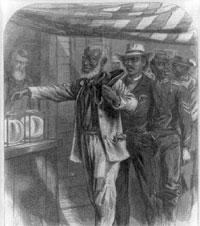 This
site was produced as an online companion to The Rise and Fall of Jim Crow,
a four-part television series that tells the story of the African American
struggle for freedom during the era of segregation. The site offers six
historical essays (each between 5,000 to 7,000 words), and five themed
essays focusing on creating, surviving, resisting, escaping, and transcending
Jim Crow oppression from the late-19th-century to the Civil Rights movement.
There are about 15 sho rter essays on topics such as Jackie Robinson and
the lynching of Emmett Till. There are 10 interactive maps that give “a
multi-layered look at the impact of Jim Crow on the social and political
landscape of the nation.” The site also offers more than 25 lesson
plans, a book list, an interactive encyclopedia, historical photographs,
and first hand narratives from people who experienced life under Jim Crow.
This well organized and wonderfully equipped site is an invaluable resource
for history and literature educators. This
site was produced as an online companion to The Rise and Fall of Jim Crow,
a four-part television series that tells the story of the African American
struggle for freedom during the era of segregation. The site offers six
historical essays (each between 5,000 to 7,000 words), and five themed
essays focusing on creating, surviving, resisting, escaping, and transcending
Jim Crow oppression from the late-19th-century to the Civil Rights movement.
There are about 15 sho rter essays on topics such as Jackie Robinson and
the lynching of Emmett Till. There are 10 interactive maps that give “a
multi-layered look at the impact of Jim Crow on the social and political
landscape of the nation.” The site also offers more than 25 lesson
plans, a book list, an interactive encyclopedia, historical photographs,
and first hand narratives from people who experienced life under Jim Crow.
This well organized and wonderfully equipped site is an invaluable resource
for history and literature educators.
Martin Luther King, Jr., Papers Project, Stanford
University
http://www.stanford.edu/group/King/
The site contains approximately 400 digitized speeches, sermons, and other
writings covering the period from 1929 to 1958, as well as 16 chapters
of materials published by the Project in 1998 as The Autobiography of
Martin Luther King, Jr. The site also provides an interactive chronology
of King’s life; a 1,000-word biographical essay; 23 audio files
of recorded speeches and sermons; 12 articles on King; 32 photographs;
and 11 links to other resources. This site is useful for studying the
development of King’s views and discourse on civil rights, race
relations, non-violence, education, peace, the war in Vietnam, and other
political, religious, and philosophical topics.
Through Our Parent’s Eyes: Tucson’s Diverse
Community, University of Arizona Libraries and Pima Community
College Libraries
http://www.library.arizona.edu/parents/currentexhibits.html
This site looks at the Hispanic, Native American, African American, Chinese,
and Jewish heritage of Tucson, Arizona. Essays, family histories, photographs
of traditional culture, oral histories, short biographies, and video clips
make this site useful for research on ethnicity and the history of the
west.
Cold War America
AMERICAN CULTURE
The Literature and Culture of the American 1950s,
Al Filreis, University of Pennsylvania
http://dept.english.upenn.edu/~afilreis/50s/home.html
This site presents more than 100 primary texts, essays, biographical sketches,
obituaries, book reviews, and partially annotated links relating to the
culture and politics of the 1950s. Organized alphabetically and according
to lesson plans, this eclectic collection includes short stories by communist
writer Howard Fast; texts of two Woody Guthrie songs; entries from the
Encyclopedia of the American Left; excerpts from Vance Packard’s
The Status Seekers (1959); items concerning McCarthyism; and selected
texts. The site also offers materials about the 1930s and 1960s, as well
as retrospective analyses of the postwar period.
Fifty Years of Coca-Cola Television Advertisements,
American Memory, Library of Congress
http://memory.loc.gov/ammem/ccmphtml/colahome.html
This site contains highlights of Coca-Cola television advertisements,
including 50 commercials, broadcast outtakes, and experimental footage.
There are five examples of stop-motion advertisements from the mid-1950s,
18 experiments with color for television ads, and well-known commercials,
such as the “Hilltop” commercial featuring the song “I’d
Like to Buy the World a Coke” (1971); the “Mean Joe Greene”
commercial (1979); the first “Polar Bear” commercial (1993);
and “First Experience.
Herblock’s History: Political
Cartoons from the Crash to the Millennium, Library of Congress
http://www.loc.gov/rr/print/swann/herblock/
An exhibit of 135 cartoons drawn between 1929 and 2000 by three-time
Pulitzer Prize-winning political cartoonist Herblock (Herbert Block)
that comment on major events and public issues. The site also presents
an essay by Block on “the cartoon as an opinion medium”;
a biographical essay; and 15 caricatures of the cartoonist. Organized
according to 13 chronological sections, with an additional segment
devoted to Presidents. |
|
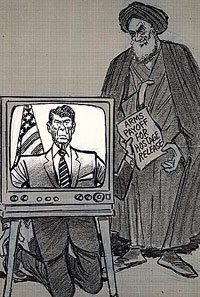 |
CIVIL RIGHTS
The Martin Luther King, Jr., Papers Project,
Stanford University
http://www.stanford.edu/group/King/
Features texts by and about Martin Luther King, Jr., including more than
100 speeches, sermons, and other writings. In addition, 15 chapters of
materials collected from diverse sources and published by the Project
in 1998 as The Autobiography of Martin Luther King, Jr. are available.
Includes important sermons and speeches such as the 1963 “Letter
from a Birmingham Jail,” the March on Washington address; the Nobel
Peace Prize acceptance speech; and “Rediscovering Lost Values,”
a sermon from 1954. The site also provides an interactive chronology of
King’s life, a 1,000-word biographical essay; and 23 audio files
of recorded speeches and sermons.
Voices of the Civil Rights Era, Webcorp
http://www.webcorp.com/civilrights/index.htm
Audio clips of speeches by three prominent public figures of the early
1960s: six from John F. Kennedy’s Inaugural Address, which reflect
the “doomed idealism” of the early 1960s; five from Martin
Luther King Jr’s 1963 March on Washington speech; and 11 demonstrating
Malcolm X’s oratory prior to his pilgrimage to Mecca. Audio components
are introduced by very brief remarks.
The Central High Crisis: Little Rock 1957,
Little Rock Newspapers, Inc.
http://www.ardemgaz.com/prev/central/
 A collection of articles and photographs from two Arkansas newspapers
covering the crisis in the city of Little Rock when governor Orval Faubus
refused to allow nine African-American students to attend the all-white
Central High School, despite Federal court rulings to the contrary. The
site includes news articles and editorials from each day of the month-long
crisis. Additional materials address the 40th anniversary of the crisis
in 1997. The site also timelines and a “Who’s Who” of
participants.
A collection of articles and photographs from two Arkansas newspapers
covering the crisis in the city of Little Rock when governor Orval Faubus
refused to allow nine African-American students to attend the all-white
Central High School, despite Federal court rulings to the contrary. The
site includes news articles and editorials from each day of the month-long
crisis. Additional materials address the 40th anniversary of the crisis
in 1997. The site also timelines and a “Who’s Who” of
participants.
Civil Rights in Mississippi Digital Archive,
Univ. Southern Mississippi, Center for Oral History
http://www.lib.usm.edu/~spcol/crda/oh/index.html
This website offers 125 oral histories relating to the civil rights movement,
including interviews with civil rights leaders like Charles Cobb, Charles
Evers, and Aaron Henry. It also offers oral history information about
prominent figures on both sides of the civil rights movement, such as
“race-baiting” Governor Ross Barnett, national White Citizens
Council leader William J. Simmons, and State Sovereignty leader Erle Johnston.
The alphabetical interview index offers a 50–100 word biography
of each subject, as well as information on the date and place of the interview.
The site promises digitized manuscript and photograph resources in the
future.
FOREIGN POLICY AND RELATIONS
The Real Thirteen Days: Hidden History of the Cuban
Missile, National Security Archive
http://www.gwu.edu/~nsarchiv/nsa/cuba_mis_cri/
Full-text images of 17 declassified documents, such as a CIA Intelligence
Estimate, correspondence, memoranda, and a post-mortem on the crisis,
as well as eight audio clips of White House security briefings, spyplane
photographs of missile launch sites. The site also offers a chronology
of events, a 1000-word essay critical of the film Thirteen Days, a 1500-word
essay looking back on the Cold War, and excerpts from seven accounts of
the crisis.
Korea + 50: No Longer Forgotten, Truman and
Eisenhower Presidential Libraries
http://www.trumanlibrary.org/korea/
More than 200 official documents, nine oral histories, and more than 70
photographs pertaining to the pursuance of the Korean War by the administrations
of Presidents Harry S. Truman and Dwight D. Eisenhower. Provides day-by-day
access covering June 24-September 14, 1950—and more sporadic contributions
during subsequent periods—to diplomatic and military documents and
accounts by administration officials, including correspondence, speeches,
memos, reports, and briefing papers. Also includes extensive “Korean
War Teacher Activity” from a high school in Independence, MO.
National Security Action Memoranda of John F. Kennedy,
John Fitzgerald Kennedy Library
http://www.jfklibrary.org/nsam.htm
This site provides access to 272 facsimiles of National Security Action
(NSA) memoranda written by President John F. Kennedy or by McGeorge Bundy,
his NSA advisor. Topics include training of Cuban nationals, U.S. forces
in Vietnam, Berlin, and civil defense. The documents are indexed by NSA
numbers from February 1961 to November 1963. There is a 100-word introduction
to the collection, but no contextual material or annotations.
The American Experience: Vietnam Online, PBS
and WGBH
http://www.pbs.org/wgbh/amex/vietnam/index.html
Companion to the PBS series, Vietnam: A Television History. Transcripts
are available for each episode, from the “Roots of a War”
to “The End of the Tunnel.” “Who’s Who”
provides photographs and profiles of 41 major figures and a timeline covers
1945 to 1997. Twelve personal reflections of the war include the memories
of a Vietnamese-born American poet, a U.S. marine, a soldier who guarded
the Ho Chi Minh trail, and a Red Cross aid worker. One essay describes
the My Lai massacre and another essay discusses the continuing issue of
prisoners of war and soldiers missing in action.
LEGAL HISTORY
The Oyez Project: U.S. Supreme Court Multimedia Database,
Jerry Goldman, Northwestern University
http://oyez.nwu.edu/
Vast number of historical documents on cases heard before the Supreme
Court. Includes abstracts of more than 1,200 Court opinions and audio
files with more than 1,500 hours of oral arguments for cases going back
to 1955. It includes such famous cases as Roe v. Wade (abortion), Baker
v. Carr (one person—one vote), and Bush v. Gore.
POLITICS AND PRESIDENTS
The Living Room Candidate: A History of Presidential
Campaign Commercials, 1952–2000, American Museum of the
Moving Image
http://www.ammi.org/livingroomcandidate/
Offers 183 television commercials used since 1952 to sell presidential
candidates to the American public and an annotated guide to 21 websites
created for the 1996 and 2000 elections. Ads are accessible by year as
well as by common themes and strategies, such as ’Looking Presidential,’
Attack Ads,’ Family Man,’ and ‘Real People.’ Includes
analysis of ad strategies as well as a program guide and teacher’s
guide intended for high school.
History and Politics Out Loud, Jerry Goldman,
Northwestern University
http://www.hpol.org/
Audio materials of significant 20th-century events and people, including
speeches, addresses, and private telephone conversations. Most material
comes from three U.S. presidents—Richard M. Nixon (34 items); Lyndon
Baines Johnson (30 items); and John F. Kennedy (19 items).
Project Whistlestop, Truman Digital Archive
Project
http://www.whistlestop.org
Offers more than 400 selected documents and photographs organized into
broad topics, from the decision to drop the atomic bomb to the Marshall
Plan, from the 1948 Presidential campaign to the Korean War. Each study
collection includes a chronology, diary entries, official documents, and
related items. Sixty teaching units, lesson plans, and classroom activities
include 24 elementary school projects, 21 middle school activities, and
22 plans for high school students. Teachers can also create their own
interactive Internet lessons for students tailored to grade level and
specific themes. Study collections are searchable by keyword, collection
folder, catalog records, or historical timeline.
Lyndon B. Johnson Library and Museum
http://www.lbjlib.utexas.edu/
These 64 oral history interviews include Dean Rusk, Johnson’s secretary,
Bess Abell, Robert MacNamara, Thurgood Marshall, and Billy Graham. The
site provides transcribed samples of recorded telephone conversations
and links to a C-SPAN collection of more than 800 transcribed recorded
excerpts and full conversations Johnson had while in office. A selection
of 20 speeches and nine messages to Congress are available in transcription
and address issues such as the Great Society and limitations on the war
in Vietnam. Facsimiles of 98 National Security Action memoranda discuss
policies towards Vietnam, nuclear weapons, and Latin America, among other
issues.
Watergate Revisited, Washington Post
http://www.washingtonpost.com/wp-srv/national/longterm/watergate/splash1a.htm
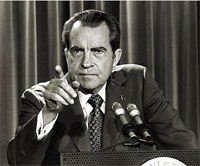 Commemorates
the 25th anniversary of the Watergate burglary. A detailed timeline covers
events from Nixon’s election in November 1968 to his resignation
in August 1974. Biographies introduce 20 “key players,” including
Pat Buchanan, John Ehrlichman, H. R. Halderman, G. Gordon Liddy, and Donald
Segretti, while another section details the reforms enacted in response,
from the Ethics Rules to efforts to enforce Campaign Spending Limits.
One essay explores the identity of Deep Throat, while another examines
the impact of the story on the newspaper. Teachers and students can read
transcripts of online interviews with Bob Woodward and Ben Bradlee or
search for related stories. Commemorates
the 25th anniversary of the Watergate burglary. A detailed timeline covers
events from Nixon’s election in November 1968 to his resignation
in August 1974. Biographies introduce 20 “key players,” including
Pat Buchanan, John Ehrlichman, H. R. Halderman, G. Gordon Liddy, and Donald
Segretti, while another section details the reforms enacted in response,
from the Ethics Rules to efforts to enforce Campaign Spending Limits.
One essay explores the identity of Deep Throat, while another examines
the impact of the story on the newspaper. Teachers and students can read
transcripts of online interviews with Bob Woodward and Ben Bradlee or
search for related stories.
Gerald R. Ford Library and Museum, University
of Texas
http://www.ford.utexas.edu/
Offers a biography, 120 photographs, and documents about Vietnam. In addition
41 National Security Study memos and 83 National Security Decision memos
address Israeli military requirements, the classification of nuclear safeguards,
and U.S. policy for Antarctica.
SOCIAL REFORM
Sixties Project & Viet Nam Generation,
Viet Nam Generation, Inc., University of Virginia
http://lists.village.virginia.edu/sixties/
Resource for teaching and researching America in the 1960s and during
the Viet Nam War. The site contains links to 17 primary documents, including
materials from the Black Panther Party, the Free Speech Movement, and
GI’s United Against War in Viet Nam. More than 100 images of political
buttons and posters and a full-text version of Vietnam: An Antiwar Comic
Book, written by civil rights activist Julian Bond. Additional items on
the site include five keyword searchable, full-text back issues of Viet
Nam Generation and 10 syllabi for courses on the 1960s and the Vietnam
War. Visitors may contribute their own personal narratives about the 1960s
(the quality and accuracy of these personal narratives are not controlled
and should be used with caution).
Free Speech Movement: Student Protest, U.C. Berkeley,
1964–65, Bancroft Library, UC Berkeley
http://bancroft.berkeley.edu/FSM/
Rich archive of material on the Berkeley Free Speech Movement (FSM). Printed
material includes five books, 29 leaflets produced by the FSM, 55 letters
to and from FSM activists, 11 local radical newsletters, 21 press releases,
and six speeches. Visitors may read complete transcripts of 10 oral histories:
eight with university administrators and faculty; two with FSM activists.
A collection of legal documents includes 40 pages of trial transcripts
and 400 letters from FSM activists to Judge Rupert Crittenden, who presided
over their trials. This site also provides 96 photographs of FSM rallies
and sit-ins taken by Ronald L. Enfield in 1964 and 1965. The site may
be searched by subject, but is somewhat difficult to navigate because
pages within the collection do not link directly to an index or the collection’s
home page.
The Whole World Was Watching: An Oral History of 1968,
South Kingston School, Brown University
http://www.stg.brown.edu/projects/1968/
This site contains transcripts, audio recordings, and edited stories from
interviews conducted in the spring of 1998 by sophomores at South Kingstown
High School, Rhode Island, about their recollections of 1968. These narratives,
including references to the Vietnam War, Civil Rights movement, and the
assassinations of Martin Luther King and Robert Kennedy, as well as personal
memories, are a living history of one of the most tumultuous years in
U.S. history.
Documents from the Women’s Liberation Movement,
Digital Scriptorium, Duke University
http://scriptorium.lib.duke.edu/wlm/
More than 50 documents—including journal and newspaper articles,
speeches, papers, manifestoes, essays, press releases, organization statements,
songs, and poems—concerning the women’s liberation movement,
with a focus on U.S. activity in the late 1960s and early 1970s. Organized
into eight subject headings—General and Theoretical; Medical and
Reproductive Rights; Music; Organizations and Activism; Sexuality and
Lesbian Feminism; Socialist Feminism; Women of Color; and Women’s
Work and Roles—and searchable by keyword.
NARA
American Originals
http://www.archives.gov/exhibit_hall/american_originals/original.html
 This
exhibition presents 14 of the “most significant and compelling documents
from the National Archives holdings.” The site furnishes, in whole
or part, facsimiles and in some cases transcriptions of the following
documents: the July 2, 1776, resolution by the Continental Congress proclaiming
independence from Great Britain; George Washington’s first inaugural
address; the Louisiana Purchase agreements; a casualty list of the 54th
Massachusetts Infantry Regiment of African American soldiers who fought
in the Civil War; a police blotter that reports the assassination of President
Abraham Lincoln; an 1868 treaty with the Sioux Indians; a U.S. Navy memorandum
reporting the Titanic disaster of 1912; a court verdict concerning gangster
Al Capone; Eleanor Roosevelt’s 1939 resignation from the Daughters
of the American Revolution in protest of the group’s refusal to
allow singer Marian Anderson to perform at Constitution Hall because of
her race; President Franklin Roosevelt’s speech to Congress requesting
a declaration of war against Japan; a draft press release announcing recognition
of Israel in 1948 by the United States, signed by President Harry S. Truman;
speech cards used by Presidents John F. Kennedy in 1963 and Ronald Reagan
in 1987 for their historic visits to Berlin; and Nixon’s resignation
letter of 1974. The materials are accompanied by brief descriptions, photographs,
audio files, and links to related NARA documents. This
exhibition presents 14 of the “most significant and compelling documents
from the National Archives holdings.” The site furnishes, in whole
or part, facsimiles and in some cases transcriptions of the following
documents: the July 2, 1776, resolution by the Continental Congress proclaiming
independence from Great Britain; George Washington’s first inaugural
address; the Louisiana Purchase agreements; a casualty list of the 54th
Massachusetts Infantry Regiment of African American soldiers who fought
in the Civil War; a police blotter that reports the assassination of President
Abraham Lincoln; an 1868 treaty with the Sioux Indians; a U.S. Navy memorandum
reporting the Titanic disaster of 1912; a court verdict concerning gangster
Al Capone; Eleanor Roosevelt’s 1939 resignation from the Daughters
of the American Revolution in protest of the group’s refusal to
allow singer Marian Anderson to perform at Constitution Hall because of
her race; President Franklin Roosevelt’s speech to Congress requesting
a declaration of war against Japan; a draft press release announcing recognition
of Israel in 1948 by the United States, signed by President Harry S. Truman;
speech cards used by Presidents John F. Kennedy in 1963 and Ronald Reagan
in 1987 for their historic visits to Berlin; and Nixon’s resignation
letter of 1974. The materials are accompanied by brief descriptions, photographs,
audio files, and links to related NARA documents.
The Declaration of Independence
http://www.archives.gov/national_archives_experience/declaration.html
A transcription of the Declaration of Independence is accompanied by images
of the original document and the 1823 William J. Stone engraving. Three
related texts—the Virginia Declaration of Rights and two scholarly
articles—(approximately 8,000 words each) provide further context.
One details the history of the Declaration and includes a bibliography
of eight titles. The other examines its language and “stylistic
artistry.”
A New Deal for the Arts
http://www.archives.gov/exhibit_hall/new_deal_for_the_arts/index.html
Divided into five sections, this exhibit presents artifacts from New Deal
art programs, introduced by a 250-word essay. “Rediscovering America”
discusses “artistic nationalism” and provides five photographs
and five paintings of American scenes. “Celebrating the People”
exhibits five paintings and one photo of people at work and two photos
and three programs of celebrations of folk culture. In “Work Pays
America,” five posters, two paintings, and two photos document and
celebrate New Deal programs. The 11 works exhibited in “Activist
Arts” make more and less subtle political arguments, including Dorothea
Lange’s “Children in a Democracy” and a flier for a
Workers’ Alliance meeting. A section on “Useful Arts”
exhibits 15 pieces, including informational posters, photos of quilting
lessons, and a WPA handcraft wall hanging. The exhibit is easy to navigate,
although visitors must return to the home page between each section. Useful
for studying the politics, social messages, and images of the New Deal.
Our Documents, NARA, National History Day,
and USA Freedom Corps
http://www.ourdocuments.gov/
A cooperative effort, this website is an online repository of 100 milestone
primary documents in American history. The first document is the Richard
Henry Lee Resolution of June 7, 1776, proposing independence for the American
colonies. The last is the Voting Rights Act of 1965. In between, visitors
will find Eli Whitney’s 1794 cotton gin patent, the 1862 Pacific
Railway Act, and the 1896 Plessy vs. Ferguson ruling. There is a full-page
scan and transcription of each document. In addition to the chronological
list of 100 documents, the site includes a “People’s Vote”
top-ten list. Of the 100 documents, Americans voted the Declaration of
Independence number one, while the 1935 Social Security Act came in last.
The site offers resource tools for educators and librarians on how to
integrate the milestone documents into the classroom.
Photographs of the American West, 1861–1912
http://www.archives.gov/research_room/research_topics/
american_west/american_west.html
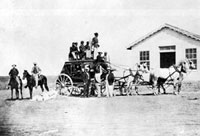 This
site features 196 photographs that document westward migration and the
development of America’s western frontier. Featured images capture
special events and everyday life on the frontier, from Native American
peoples and villages, to military maneuvers, to laborers and businessmen
at work. A 15-25 word caption, the name of the photographer, and date
(if available) accompany each photograph. Listings are arranged by subject
and chronologically under each subject. An index lists the photographs
by state. For those exploring the history of the American West, this is
an ideal resource for illustrations. This
site features 196 photographs that document westward migration and the
development of America’s western frontier. Featured images capture
special events and everyday life on the frontier, from Native American
peoples and villages, to military maneuvers, to laborers and businessmen
at work. A 15-25 word caption, the name of the photographer, and date
(if available) accompany each photograph. Listings are arranged by subject
and chronologically under each subject. An index lists the photographs
by state. For those exploring the history of the American West, this is
an ideal resource for illustrations.
Pictures of African Americans During World War II
http://www.archives.gov/research_room/research_topics/
african_americans_during_wwii/
african_americans_during_world_war_2.html
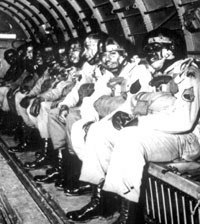 Assembled
to commemorate the 50th anniversary of World War II, these 261 photographs
illustrate African American participation in the war effort. Approximately
2.5 million African American men registered for the draft, and African
American women volunteered for the military. The 261 images in this collection,
drawn from the Army Signal Corps, Department of Navy, Coast Guard, Marine
Corps, and Office of War Information, depict African Americans in military
training, in combat, and on the home front. The site is helpful for those
interested in 20th-century African American history or World War II history. Assembled
to commemorate the 50th anniversary of World War II, these 261 photographs
illustrate African American participation in the war effort. Approximately
2.5 million African American men registered for the draft, and African
American women volunteered for the military. The 261 images in this collection,
drawn from the Army Signal Corps, Department of Navy, Coast Guard, Marine
Corps, and Office of War Information, depict African Americans in military
training, in combat, and on the home front. The site is helpful for those
interested in 20th-century African American history or World War II history.
Pictures of World War II
http://www.archives.gov/research_room/research_topics/
world_war_2_photos/world_war_2_photos.html
This archive offers 202 photographs depicting the activities of Americans
during World War II. They represent all aspects of wartime preparation,
from military training to combat and support services, as well as the
homefront activities of civilians and war agencies. Images include leaders
like Franklin D. Roosevelt, General Dwight Eisenhower, and Adolph Hitler,
as well as posters from homefront rationing and war bond campaigns, Rosie
the Riveter posters, combat photographs of invasions and scouting missions,
and images of entertainers like Danny Kaye and Bing Crosby visiting the
troops. Each photograph is accompanied by a 15-25 word caption with the
title, photographer, location, and date the photograph was taken. This
site is ideal for those interested in illustrating reports or lectures
on American contributions to World War II.
Picturing the Century: One Hundred Years of Photography
from the National Archives
http://www.archives.gov/exhibit_hall/picturing_the_century/index.html
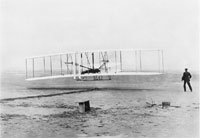 This
site, based on an exhibition of historically significant photographs,
commemorates 20th-century events and everyday life. The gallery features
70 photographs grouped into six chronological headings. Images depict
events such as the first Wright brothers flight at Kitty Hawk, immigrants
arriving at Ellis Island, Lyndon Johnson meeting Martin Luther King, Jr.,
a war protestor placing daisies into the rifle of a U.S. soldier, and
Nixon’s post-resignation departure from the White House, as well
as images of everyday life across the nation and throughout the century.
Each chronological section opens with a brief (75-100 word) introduction.
A caption contextualizes each image and provides information on the photographer,
if known. Each image in the portfolio is accompanied by a title, notes
on the photographer, and the date and place the photograph was taken.
All photographs are printable. This site is ideal for students and teachers
of American culture, society, and historical events in the 20th century. This
site, based on an exhibition of historically significant photographs,
commemorates 20th-century events and everyday life. The gallery features
70 photographs grouped into six chronological headings. Images depict
events such as the first Wright brothers flight at Kitty Hawk, immigrants
arriving at Ellis Island, Lyndon Johnson meeting Martin Luther King, Jr.,
a war protestor placing daisies into the rifle of a U.S. soldier, and
Nixon’s post-resignation departure from the White House, as well
as images of everyday life across the nation and throughout the century.
Each chronological section opens with a brief (75-100 word) introduction.
A caption contextualizes each image and provides information on the photographer,
if known. Each image in the portfolio is accompanied by a title, notes
on the photographer, and the date and place the photograph was taken.
All photographs are printable. This site is ideal for students and teachers
of American culture, society, and historical events in the 20th century.
Powers of Persuasion: Poster Art from World War II
http://www.archives.gov/exhibit_hall/powers_of_persuasion/
powers_of_persuasion_home.html
This site examines poster art as a method of persuasion during World War
II. Featuring 33 posters and one audio clip—the song “Any
Bonds Today?”—the materials are divided into two sections.
The first, which focuses on themes of “patriotism, confidence, and
a patriotic outlook,” is arranged into five subsections: “Man
the Guns!”; “It’s a Woman’s War Too!”; “United
We Win”; “Use it Up, Wear it Out, Make it Do, Or Do Without”;
and “Four Freedoms.” The second section, also arranged into
five subsections, presents posters that attempted to foster “feelings
of suspicion, fear, and even hate,” a distinctly different strategy
of propaganda. The materials are contextualized by background essays.
Although limited in number, the site will be valuable for studying wartime
depictions of gender and race, as well as the power of images to further
national goals.
Public Papers of the Presidents of the United States,
1992–2001
http://www.gpo.gov/nara/pubpaps/photoidx.html
Presents digitized versions of 20 volumes of Public Papers of the Presidents
of the United States covering 1992–2001. Material includes papers
and speeches issued by the Office of the Press Secretary during the terms
of William J. Clinton (17 volumes, 1993–2001), two volumes pertaining
to George H. W. Bush for 1992, and one volume for George W. Bush (January
20– June 30, 2001). The documents—including addresses, statements,
letters, meetings with foreign leaders, and interviews with the press—have
been compiled by the Office of the Federal Register and published in chronological
order. Includes appendices with daily schedules and meetings, nominations
to the Senate, proclamations, executive orders, and additional materials.
Users may access multiple volumes by keyword and separate volumes by title
of document, type, subject matter, and personal names. Also includes 10-15
photographs per volume. Valuable for those studying politics, public policy,
and international affairs during this era.
U.S. Electoral College
http://www.archives.gov/federal_register/electoral_college/
Basic statistical data and explanatory material on the workings of the
Electoral College provided by the Federal office that coordinates its
operations. Data includes electoral and popular vote totals for presidential
elections since 1789; listings by state of electoral college members for
1992–2000; facsimiles of certificates of ascertainment and certificates
of votes for the 2000 election; and a digest of current state laws and
requirements. Also offers a 2,700-word procedural guide; relevant federal
law provisions; a 1,600-word description of state responsibilities; and
10 links to additional National Archives sites of relevance. A quick and
easy way to locate vote tallies and legal information regarding the institution
of the Electoral College.
When Nixon Met Elvis
http://www.archives.gov/exhibit_hall/
when_nixon_met_elvis/index.html
Presents 29 photographs and five documents relating to Elvis Presley’s
bizarre December 1970 visit with Richard Nixon in the White House. Features
a well-known photograph of the meeting and a five-page letter written
from Presley to Nixon requesting an appointment as a federal agent “to
be of any service that I can to help The Country out.” “I
will be here for as long as it takes to get the credentials of a Federal
Agent,” wrote Presley, “I have done an in-depth study of drug
abuse and Communist brainwashing techniques and I am right in the middle
of the whole thing where I can and will do the most good.” Also
includes background information about Presley’s visit and official
White House notes of the encounter. A revealing snapshot into the perceptions
of these two public figures concerning the youth culture of their day.
|
|




